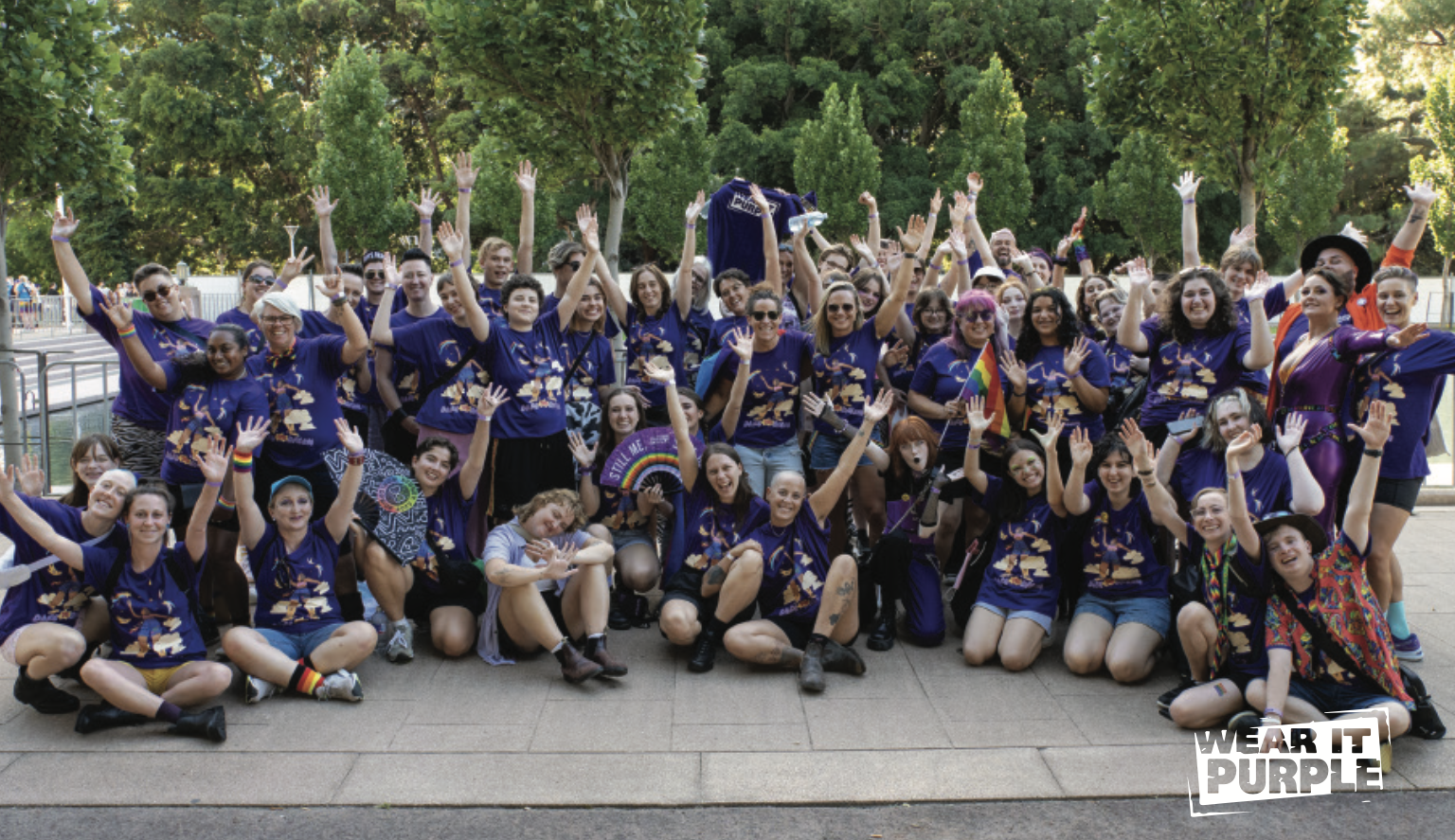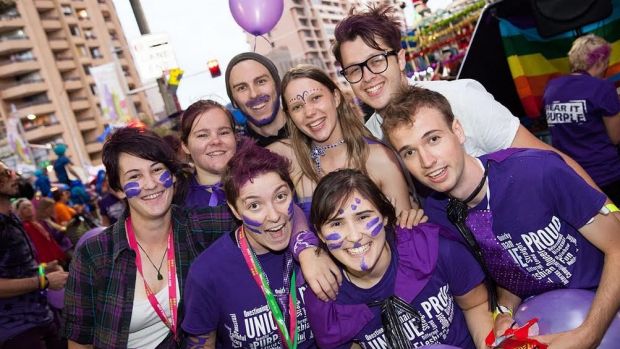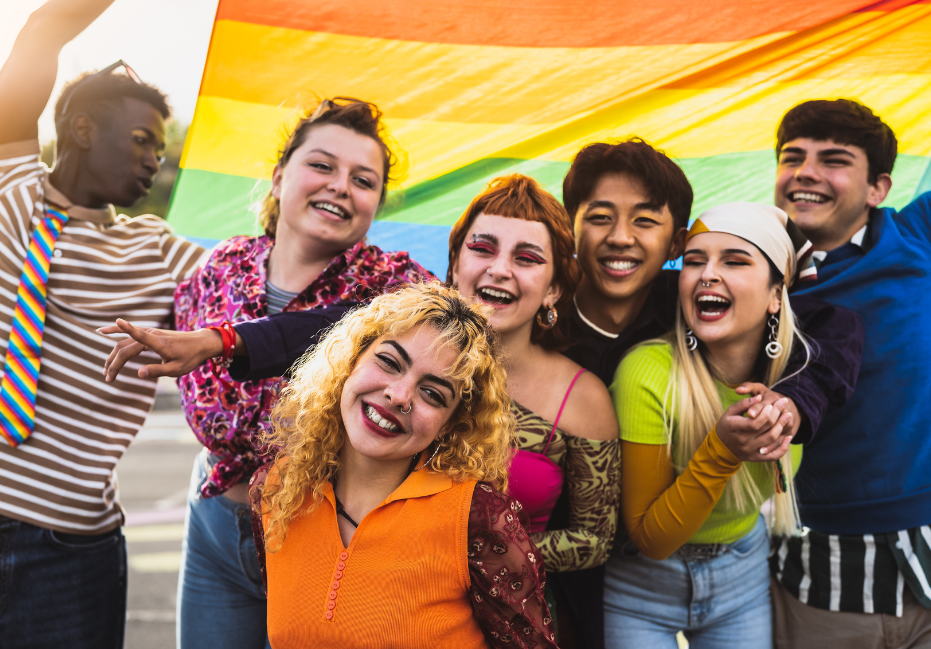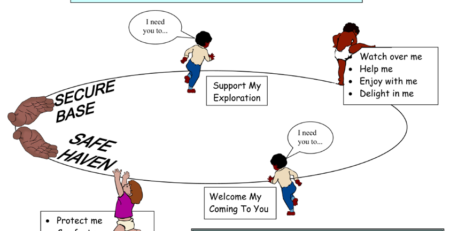‘Wear it Purple” Day (based in Australia) occurs this year on Friday 25th August and is a day for the whole community to go purple in support of LGBTQIA+ youth, and to stand out against bullying and discrimination.
It was founded by 2 students Kate Hudson & Scott Williams who saw the high rates LGBTQI+ people at risk and has changed from initially being about sorrow and self-harm prevention, to a celebration of rainbow youth and pride. Following instances of bullying, harassment, and tragic suicides, Kate and Scott were motivated to establish a day aimed at instilling hope, offering support, and fostering solidarity among people. Their goal was to demonstrate the existence of a caring community that stands united with those who are struggling, emphasising the message that they are cherished. They rallied their schools, friends, and family to don the colour purple and take a stance. Over time, this “Day” has evolved into a global movement.
Just around 30 years back, being gay was actually thought of as a mental illness. And just 25 years ago, it was against the law to be gay in Australia. Crazy, right? It wasn’t until 2017 that same-sex marriage was finally made legal here.
All these big changes tell us a lot about how society’s evolving. And as a result, we’re seeing much more diverse queer representation popping up all over the world. It’s like the world’s getting more colourful and accepting.
What are the Challenges LGBTQ+ Youth Face?
If you are part of the lesbian, gay, bisexual, transgender, intersex and queer/questioning (LGBTIQ+) community and are struggling with your mental health, you’re not alone. LGBTIQ+ individuals have a higher chance of being diagnosed with mental health concerns like depression, anxiety, or even grappling with thoughts of suicide. These mental health issues are particularly high for trans young people, with an Australian research report finding that: around 70 to 75 per cent of trans young people have a clinical diagnosis of depression and/or anxiety, almost 80 per cent have self-harmed, and close to 50 per cent having attempted suicide at one point in their life.
Simply identifying as LGBTIQ+ IS NOT what brings on mental health issues. It’s the ongoing challenges of dealing with stigma, bullying, abuse, and discrimination that can really mess things up. This can end up affecting various parts of life, like work, relationships, money matters, and even finding a place to live.
Dealing with the stress of feeling different can make you feel like you’re on guard all the time, and it might even distance you from friends and family who don’t quite get it. On top of all that, you might also have to grapple with your own internalised feelings of homophobia or transphobia. It’s like a whole bunch of stuff that can really take a toll.
How Do I Go About Sharing My Sexual Orientation and Gender Identity With Others?
It’s tough and pretty upsetting when we have to keep a part of ourselves hidden. Our gender identity and sexuality are core aspects of who we are.
Lots of folks have awesome experiences when they open up about their gender and sexuality. It can bring acceptance, support, stronger connections, and that great feeling of being able to just be you, without holding anything back.
But here’s the downside: lots of people also worry about sharing their true selves because they’re scared of bad reactions, discrimination, bullying, or even violence. Sadly, that stuff can happen. So, it’s really important to make sure that it’s safe for you to come out or talk about your identity.
If someone gives you a hard time because of who you are, take a moment to think if that relationship is worth keeping. If you can, give them some time to wrap their heads around it – remember, it might have taken you a while (maybe even years) to fully accept your own identity.
If you’re feeling unsure, facing negativity, or just feeling really down, don’t hesitate to seek extra support. You don’t have to go through this alone.
But What Does Wearing “Purple” Accomplish?
- Making a Statement: When you notice folks around you rocking the colour purple, it’s a strong signal that you’re part of a community. It shows LGBTQ+ young people that there’s a whole bunch of people who stand by them and understand what they’re going through.
- Kickstarting Chats: Putting on purple for this occasion often kickstarts conversations about the challenges that LGBTQ+ youth face. It’s a chance to educate others, shed light on the struggles, and encourage them to be more understanding.
- Building Safe Environments: By joining in on Wear It Purple Day, you’re helping to create spaces where LGBTQ+ youth can freely express themselves. This isn’t limited to just schools – it extends to homes, workplaces, and neighbourhood’s too.
- Cultivating Inclusivity: The visibility and support sparked by Wear It Purple Day play a role in fostering a culture of acceptance. It’s like a message that says being different is something to celebrate, not hide away.
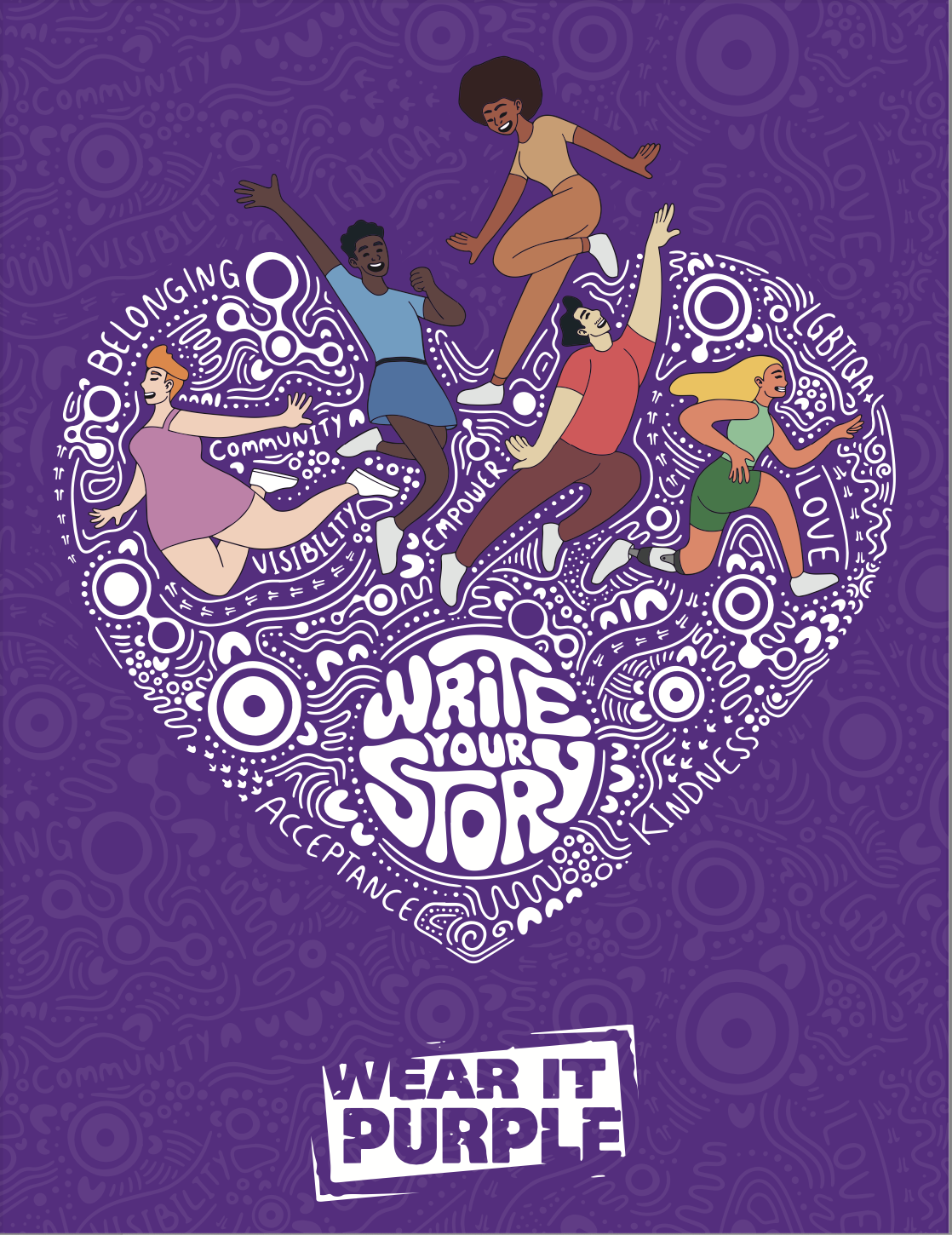
In Conclusion:
Get ready for Wear It Purple Day on August 25! This day is all about showing support and celebrating LGBTQIA+ young people, and what better place to turn purple than schools and classrooms?
This year has been a tough ride for LGBTQIA+ youth. The news and media have been filled with stories of discrimination, often directly targeting queer youth. That’s why it’s important to take a stand against discrimination and bullying, and really champion inclusion.
Whether you’re planning to get into the spirit in your classroom, as part of a Pride group, with your teaching team, or even involving the whole school, there are so many awesome ways to do it. And every single activity, event, or morning tea helps spread that powerful message and boosts visibility for an important cause.
Go online to “Wear it Purple Day” to obtain further ideas and information 😊
Resources and support
You may wish to reach out to safe friends and family members. Talking to your doctor or mental health professional is also a great idea.
Below is a list of organisations that provide further information and support.
- QLife — counselling and referral service for LGBTIQ+ individuals: call 1800 184 527 (3pm to midnight daily) or chat online.
- Lifeline — support for anyone having a personal crisis: call 13 11 14, 24/7, text, or chat online.
- Suicide Call Back Service — for anyone thinking about suicide: call 1300 659 467.
- Beyond Blue — for anyone feeling depressed or anxious: call 1300 22 4636, email or chat online, 24/7.
- Headspace — mental health space for ages 12-25 years.
- Kids Helpline — mental health support for young people aged 5-25 years. Call 1800 55 1800 anytime.
- ACON — LGBTIQ+ health and HIV prevention and support.
- TransHub — ACON’s digital trans and gender diverse platform.
- Head to Health — for advice and to get connected to local mental health services, you can call 1800 595 212. Check the operating times.
- PFLAG — Parents and Friends of Lesbians and Gays.
- ReachOut — mental health resources for young people.
If you need any ideas or assistance in dealing with any challenges you may face, please don’t hesitate to reach out to us. Give us a call at (08) 9248 7852 or click this link to schedule an appointment.

